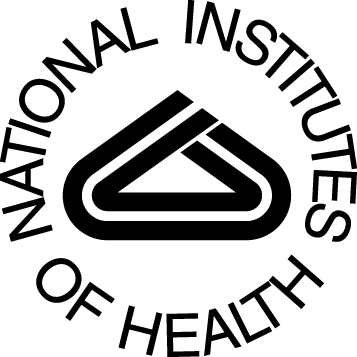|
Contact Us
Division of Personnel Security and Access Control
Personnel Security
Helpdesk: 301-402-9755
e-QIP: 301-402-9735
Appointment Line: 301-496-0051
E-mail: orspersonnesecurity@
mail.nih.gov
Access Control
Helpdesk: 301-451-4766
E-mail: facilityaccesscontrol@
mail.nih.gov
  
|
|
|
|
|
HHS ID Badge/PIV Card Rollout Scorecard
Here are the most recent NIH badging statistics provided by HHS as of August 03, 2012.
Sponsored: 39,773 Enrolled: 38,739 Issued: 38,241*
*This figure represents 96.1% of individuals who have been sponsored.
|
|
NED Training Schedule for September
 The HSPD-12 Program Office continues to offer free NED training for beginners and experienced NED users. Take this opportunity to quickly master NED in a hands-on computer lab environment. The HSPD-12 Program Office continues to offer free NED training for beginners and experienced NED users. Take this opportunity to quickly master NED in a hands-on computer lab environment.
NED for Beginners
Date: Friday, September 14, 2012 Seats Still Available
Time: 9:00 a.m. - 12:00 p.m.
Location: Building 12A, Room B51
NED for Advanced Users
Date: Friday, September 14, 2012 Seats Still Available
Time: 1:00 p.m. - 4:00 p.m.
Location: Building 12A, Room B51
Contact Lanny Newman at newmanl@mail.nih.gov to reserve a space. In your e-mail, provide Lanny with your name and IC and which course you would like to attend. |
 Remember to Return Your HHS ID Badge/PIV Card When Leaving NIH Remember to Return Your HHS ID Badge/PIV Card When Leaving NIH
Employees, contractors or affiliate who plan to leave the employ of NIH must turn in their HHS ID Badge/ PIV Card to their Administrative Officer so that s/he can deactivate the badge in NED within 18 hours according to the Federal Information Processing Standard-201 (FIPS-201). Deactivated badges should be returned to the badging office for proper disposal.
The requirement to collect the badge as part of the check-out process for all employees, contractors and affiliates leaving NIH is stated in the NIH Policy Manual under ORH (2300-940-Clearance of Personnel for Separation), posted at: http://oma.od.nih.gov/manualchapters/person/2300-940/.
DPSAC reports that some AOs, unaware of the return policy, have, on occasion, destroyed and/or disposed of HHS ID Badges/PIV Cards after deactivating them. AOs need to be aware that the HHS ID Badge/PIV Card is Federal property and requires proper disposal by DPSAC.
Note: individuals moving from one Institute/Center to another may keep their HHS ID Badge/PIV Card; however, they may need access to new physical locations. In that case, their AO should contact: facilityaccesscontrol@mail.nih.gov.
This information can be found under "Returning Your Badge When Leaving NIH" on the ID Badge website (http://idbadge.nih.gov).
|
|
Individuals with No Social Security Number
CAPT Theresa Minter, Director of the Division of Personnel Security and Access Control (DPSAC), sent the following message to the NIH Administrative Community on August 8, 2012.
Important Message Regarding Individuals with no Social Security Number
For foreign visitors/volunteers/etc. who do not have (and will not be) obtaining a Social Security Number, DPSAC will no longer be able to issue an HHS ID Badge to these individuals. If these individuals require an ID badge for accessing the NIH, they must obtain an "Extended Visitor" badge from the NIH Police.
The process to receive an Extended Visitor badge can be found online at: http://www.ors.od.nih.gov/ser/dp/Pages/PoliceIDCards.aspx.
In obtaining an Extended Visitor badge, please note the following:
- When completing the form, please designate "FV" in the Social Security Number field.
- When completing the form, please select the "Volunteers/Others" checkbox when indicating the type of Extended Visitor.
- The NIH Police have up to seven (7) business days to complete the authorization process for an Extended Visitor badge. Requests for these badges are exceptionally high, so please allow the NIH Police the full seven (7) business days prior to requesting a status update.
Note: If you have someone who has applied for a social security number but does not yet have it, you can leave their sponsorship in NED for a PIV and we will enroll them for the PIV and take their fingerprints. Once the fingerprints are clear, they will receive an extended visitor badge. When their social security number has been received and updated in NED, the e-QIP request will be pushed through for the background investigation they need as a PIV requirement.
Once their e-QIP has been initiated, they have completed their e-QIP and turn in their attachment forms, their request for badge issuance will be pushed through and they can pick up their PIV badge.
If you have any questions regarding this process, please contact DPSAC Director Theresa Minter at: Theresa.Minter@nih.gov or (301) 451-9381.
|
|
Helpful Tips
Keep your passwords up to date to avoid having your account deactivated -- everyone transitioning away from username & password to HHS ID Badge/PIV Card & PIN login will still need to update their password when they receive an e-mail notice that their password is about to expire. Otherwise, they will be locked out of their computer until they have updated their password, even though they may not be using their password for login.
If an LWS is not available in your IC or your immediate area, and you work in the greater Bethesda or Rockville area -- please call 301-451-4766 or 301-402-9755 to schedule an appointment with the Division of Personnel Security and Access Control located in Building 31 on the NIH main campus.
Smart card authentication with an HHS ID Badge/PIV Card and PIN is more secure than with a username and password -- because it is a form of 'two-factor authentication,' i.e., something you have, like your HHS ID Badge/PIV Card, and something you know, like a PIN.
LWS Operator Training Guide posted online -- a revised training guide for Lifecycle Work Station (LWS) operators can be found on the ID Badge website at: http://www.ors.od.nih.gov/ser/dpsac/training/Pages/lifecycle.aspx.
The updated guide features illustrated, easy-to-follow instructions for logging into the LWS software, the PIN reset process and the certificate renewal process.
Know someone who could benefit from receiving DPSAC News? -- Just have them e-mail Lanny Newman (newmanl@mail.nih.gov) and ask to be added to the DPSAC News mailing list.
Exemptions to mandatory HHS ID Badge/PIV Card & PIN login to ITAS -- to view the criteria that allow an individual to use a Username/ Password in place of an HHS ID Badge/PIV Card & PIN to access ITAS, click on: Exemptions.
Do not lend your HHS ID Badge/PIV Card to anyone -- lending out your HHS ID Badge/PIV Card is prohibited. The issuance of the HHS ID Badge/PIV Card is based on strict identity proofing and the determination of one's suitability for a specific position classification.
ICs that want to add LWS operators to the approved roster -- send a written request to Richie Taffet at taffetr@mail.nih.gov. Once he has approved the request, he will forward the name to HHSIdentityAdmins@deloitte.com to complete the approval process, add the name to the LWS operator roster, and inform the IC that the individual is now approved to operate the IC's LWS.
|
 FAQs Q. Will I continue to be able to use 'Remote Desktop' to log into my office computer during telework after Windows smart card login becomes a requirement at NIH? A. The short answer is YES. Remote Desktop enables you to connect to your Windows computer across the Internet from virtually any computer. Unlike a VPN connection, which gives you access to the NIH network, Remote Desktop uses Remote Desktop Protocol (RDP) to allow you to see and control your connected PC as though you were sitting directly in front of it (you will also need a VPN connection if you are trying to connect to your PC from outside the NIH network). The Windows smart card login requirement is being enforced by a login script that gets executed after you log in to your computer. If the script detects that you did NOT login with a smart card, it will immediately log you off your computer, unless you are exempt from the smart card login requirement (e.g., the NIH IT Service Desk can grant you an immediate temporary exemption if you left your PIV card at home) In the specific case of Remote Desktop Protocol, you are automatically granted an exemption (i.e., will not be forced to log off if you did not log in with a smart card), since the login script cannot detect smart card use with RDP. Therefore, when you RDP into your office computer, it will be your choice how you login (smart card or userid/password); either way, you will NOT be logged off. Q. I know that the digital certificates in my HHS ID Badge/PIV Card are up to date, but when I try to log in to the NIH network nothing happens. Any suggestions? A. Yes. You should first try to log in using another computer and card reader. If you are able to log on successfully, it's likely that your card reader is broken or dirty. Your IC's IT department should be able to provide you with a new card reader. If you're still unable to log in, you should stop by the DPSAC Badging office where a badge issuer can diagnose the problem. If your badge is broken, you will be issued a new one.
Q: What will I need to log in to my computer with an HHS ID Badge/PIV card? A: To log in, you must have: - Your PIV Card/HHS ID Badge
- A smart card reader connected to your computer
- Your PIN for your PIV Card/HHS ID Badge
- Active (not expired) digital certificates
You might also need: - Software that allows your computer to read and use the digital certificates on your HHS ID Badge/PIV Card
|
|
News Briefs
New 'NIH Guest Network' Makes Wireless Internet Access Easier for NIH Visitors and Guests
The ORS Information Technology Branch sent out the following message to NIH staff on July 26, 2012 announcing the launch of the NIH Guest Network
Effective Tuesday, July 31, 2012, it will be much easier for NIH patients and guests to connect to the Internet using their wireless devices.
Currently, NIH visitors who need to access the Internet must pre-register up to 30 days in advance of their visit. In addition, their wireless equipment must be configured and a temporary account and password must be created.
NIH guests number in the thousands each year. These guests include patients and their families, conference and workshop attendees, and individuals who serve on advisory committees, boards and review groups.
As of July 31, 2012, guests will no longer have to go through pre-registration, configuration, and account initiation to obtain Internet access while visiting NIH.
- Guests will be able to access the Internet using their wireless devices by simply acknowledging a standard set of terms and conditions.
- In addition to providing a better experience for patients and visitors, IC staff will no longer need to spend time initiating pre-registration. Conservative estimates indicate a savings of approximately $1.4 million per year.
The NIH Guest Network allows wireless Internet-only access. It does not allow access to any NIH internal systems, services or resources. The NIH Guest Network is monitored for operational and security purposes and access to some websites may be blocked.
The NIH reserves the right to suspend the use of this service without notice. The language for the Terms and Conditions that will have to be "accepted" to use the network is attached.
For more information, contact NIH IT Service Desk at 301-496-4357 (6-HELP) (local), 866-319-4357 (toll-free), 301-496-8294 (TTY) or http://itservicedesk.nih.gov.
|
|
Safety Corner
Strange Odor in the Workplace?
The following article was prepared by the Division of the Fire Marshal, ORS
Know what to do and don't spend time looking for the source of a strange odor - report it by dialing 911 on a NIH phone (301-496-9911 on a cell phone) or 9-911 if off campus and, if necessary, evacuate the area.
Construction In or Near Your Work Area
At times, work being performed in a construction site may generate odors not normally encountered in your work area. Don't assume that the odor is from the construction site or is a non-threatening material. The odor could be from a fire or a chemical odor from a hazardous materials spill in a nearby lab or in the hallway outside of your office. Remember - never assume - dial 911 on a NIH phone (301-496-9911 on a cell phone) or 9-911 if off campus for assistance.
Familiar Burning Odor
Many times individuals will recognize an odor that is frequently encountered, for example an electrical odor, and a short time later, find that the odor has dissipated. At the end of the day they leave work only to return the next morning to find that a fire occurred overnight. Remember - never assume - dial 911 on a NIH phone (301-496-9911 on a cell phone) or 9-911 if off campus for assistance.
Burning Odor with No Sign of Smoke
Often individuals will smell a burning odor and, because they do not see smoke, do not call the fire department for assistance. Small office appliances such as shredders can overheat, produce a burning odor and ultimately catch on fire if not emptied frequently and maintained properly. Also, many times employees think "someone else has called the fire department." As a result, the fire department does not receive notification of the fire emergency until it has developed into a major incident. Remember - never assume - dial 911 on a NIH phone (301-496-9911 on a cell phone) or 9-911 if off campus for assistance.
Odor Causing Physical Effects
Our bodies have a built-in monitoring system. If we are exposed to a chemical that may be harmful, in many cases our body will let us know by watery and/or burning eyes, coughing, nausea, etc. If you find yourself in a situation where you are being physically affected, you should advise the people in the area of the problem, notify the fire department and evacuate the area. Note: many hazardous chemicals do not cause immediate physical effects. Remember - never assume - dial 911 on a NIH phone (301-496-9911 on a cell phone) or 9-911 if off campus for assistance.
Even if you KNOW the cause of a chemical or burning odor - call the Fire Department by dialing 911 from a NIH phone (301- 496-9911 on a cell phone) or 9-911 if off campus, so that the fire department can investigate the odor to confirm no one is in danger.
If you have questions regarding strange odors in the workplace, please contact the Division of the Fire Marshal, Office of Research Services at 301-496-0487.
|
|
A biweekly e-newsletter from the Office of Research Resources, Division of Personnel Security and Access Control (ORS/DPSAC) to keep you informed as NIH rolls out "Homeland Security Presidential Directive 12" (HSPD-12) establishing a common identification standard to better safeguard NIH and its workforce.
|
|
|
|
|